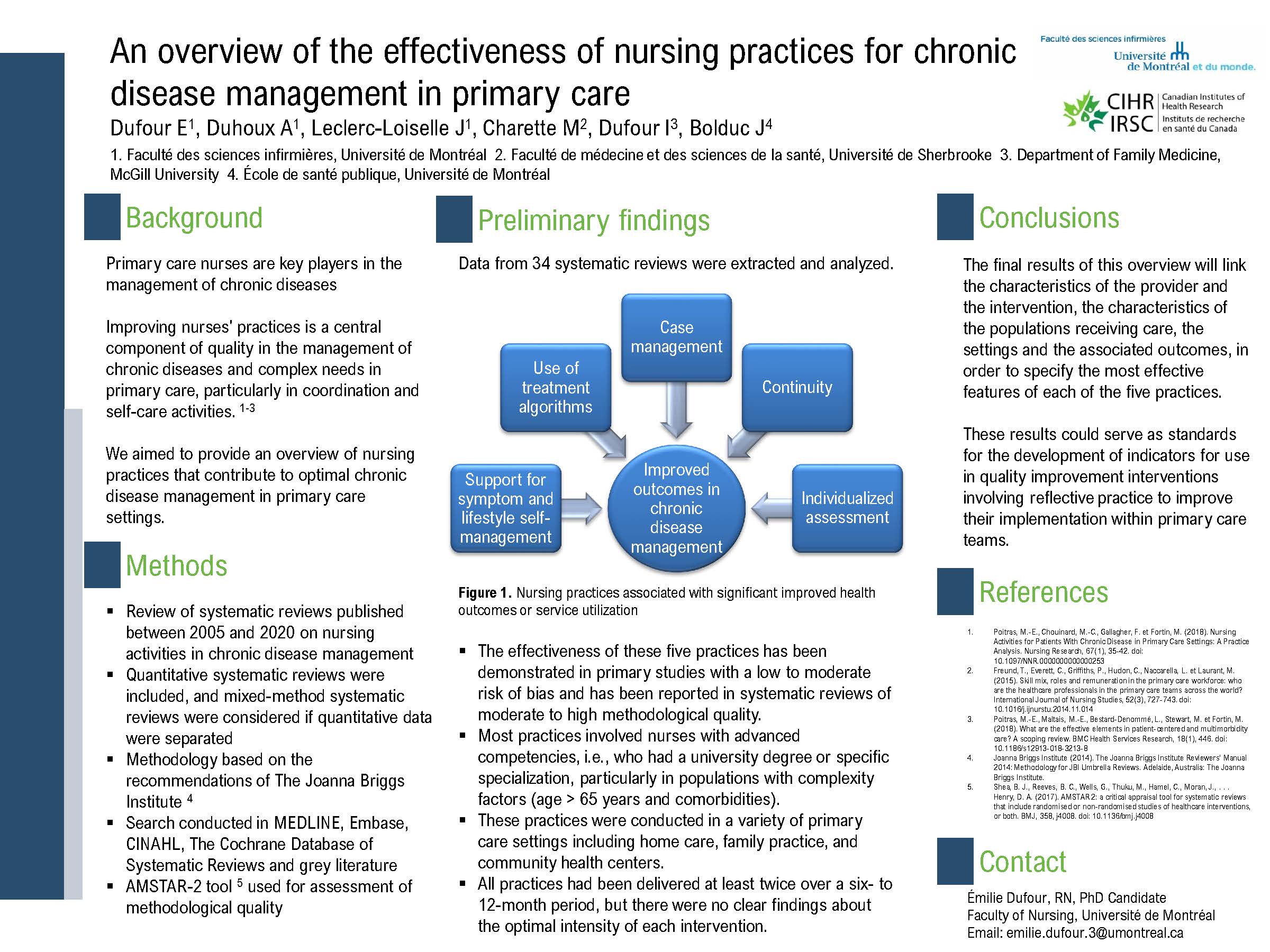SRFP008: An overview of the effectiveness of nursing practices for chronic disease management in primary care
Emilie Dufour; Arnaud Duhoux, PhD; Jolianne Bolduc; Martin Charette, PhD; Isabelle Dufour, PhD, RN; Jérôme Leclerc-Loiselle
Abstract
Objectives: To identify nursing practices that contribute to optimal chronic disease management in primary care settings.
Study design : Systematic overview of systematic reviews. Quantitative systematic reviews were included and mixed-method systematic reviews were considered if quantitative data were separated. The methodological quality was assessed independently by two reviewers using the AMSTAR 2 tool. The design of this review is based on the recommendations of The Joanna Briggs Institute.
Setting or Dataset : A literature search was conducted in MEDLINE, Embase, CINAHL and The Cochrane Database of Systematic Reviews as well as grey literature. Publications in English and French were considered (2005-2020).
Population Studied : Adults receiving care for one or more chronic condition(s).
Intervention/ Instrument : Any intervention, care, procedure, practice or service provided by a nurse in primary care.
Main and Secondary Outcome Measures: Outcomes include any measure that reflects an improvement in service delivery or health outcomes for patients with chronic condition(s).
Results or Anticipated Results: Thirty-four systematic reviews were included in the overview. Nursing practices associated with positive outcomes will be categorized according to four components of the Chronic Care Model. For each intervention, a synthesis of its main characteristics (mode, intensity, frequency, duration, care structure, provider qualifications), target populations (age, number of chronic diseases, recent hospitalization history and physician affiliation) will be presented.
Conclusions: This review provides a portrait of nursing practices that have demonstrated improved patient outcomes. Therefore, this synthesis could be used as a basis for identifying gaps between best practices and current practices in order to foster the conditions necessary for their deployment in primary care.

Jack Westfall
jwestfall@aafp.org 11/21/2021Terrific poster and presentation. Thanks for your work.